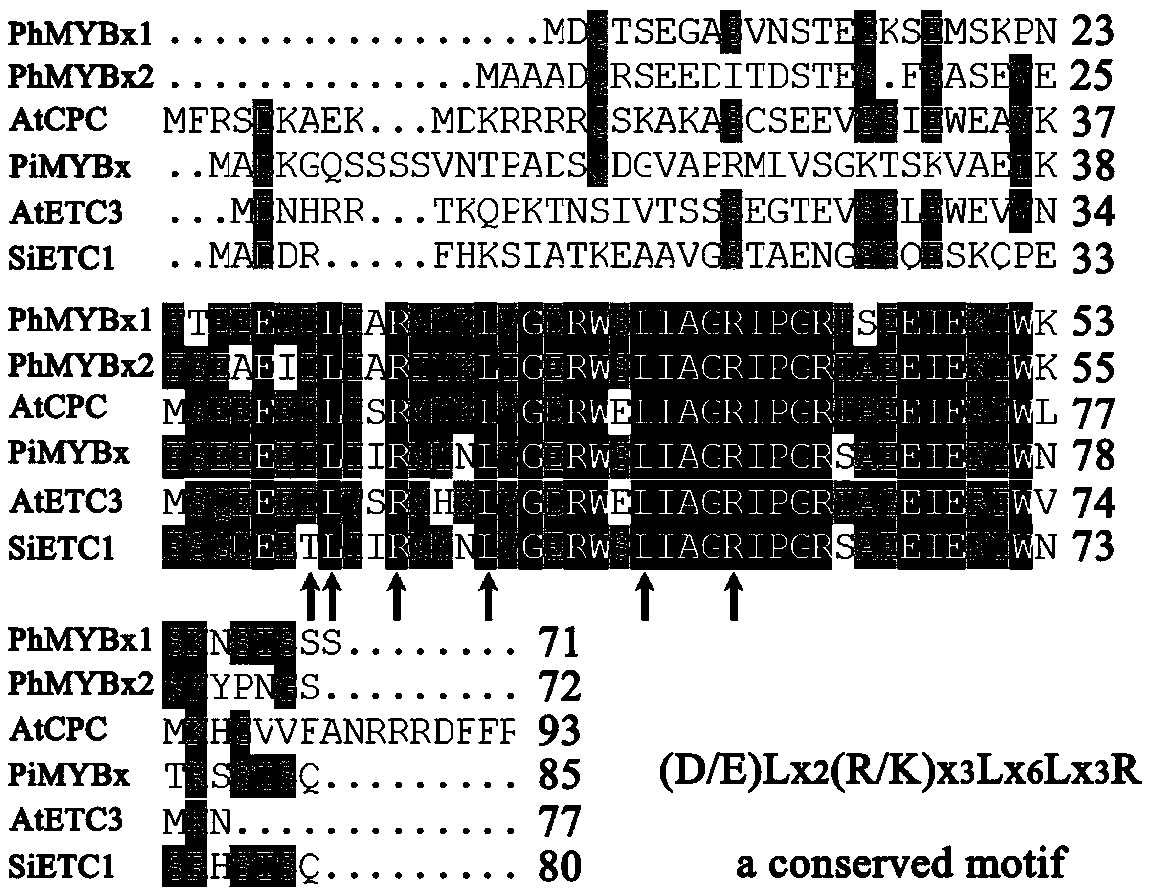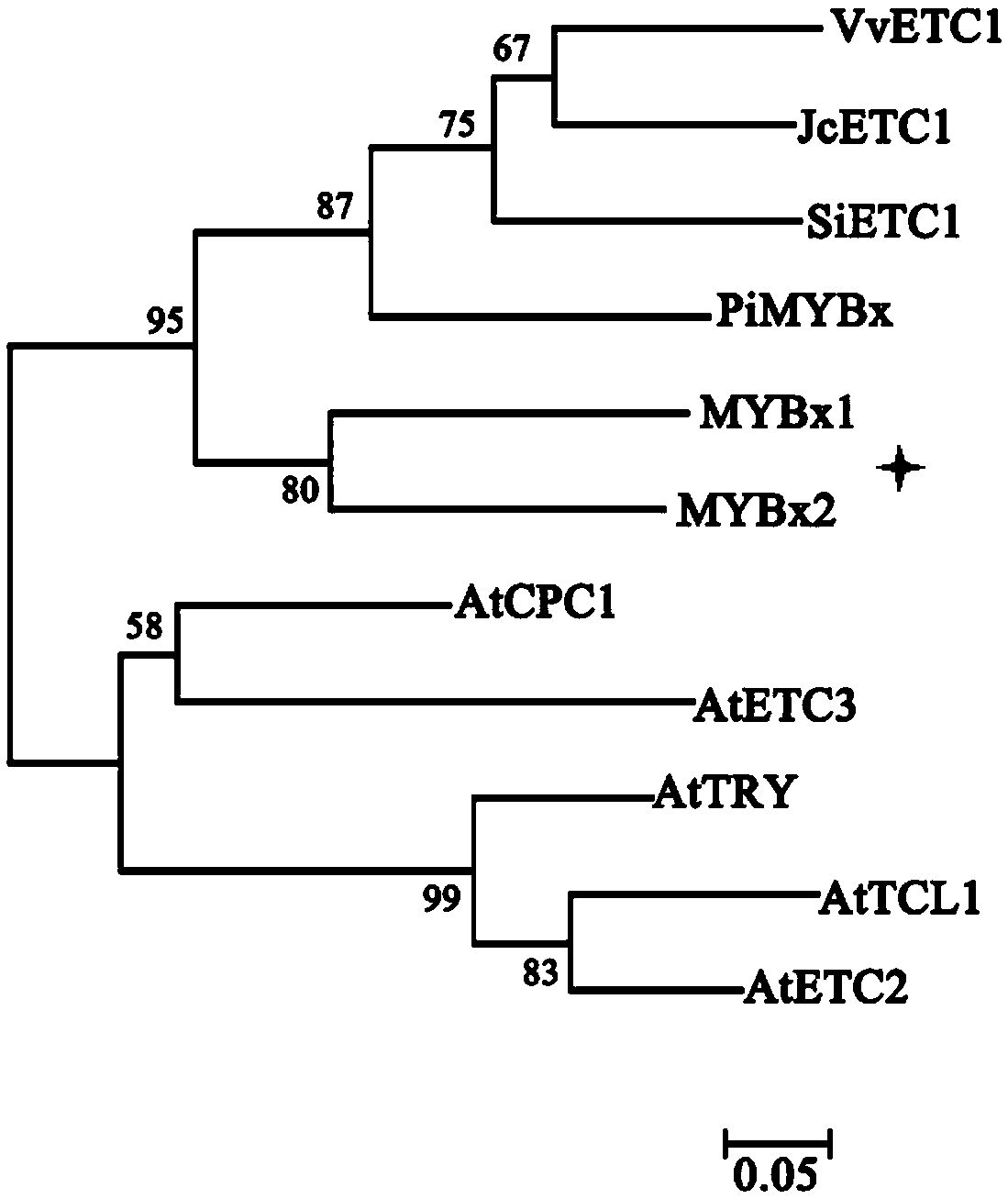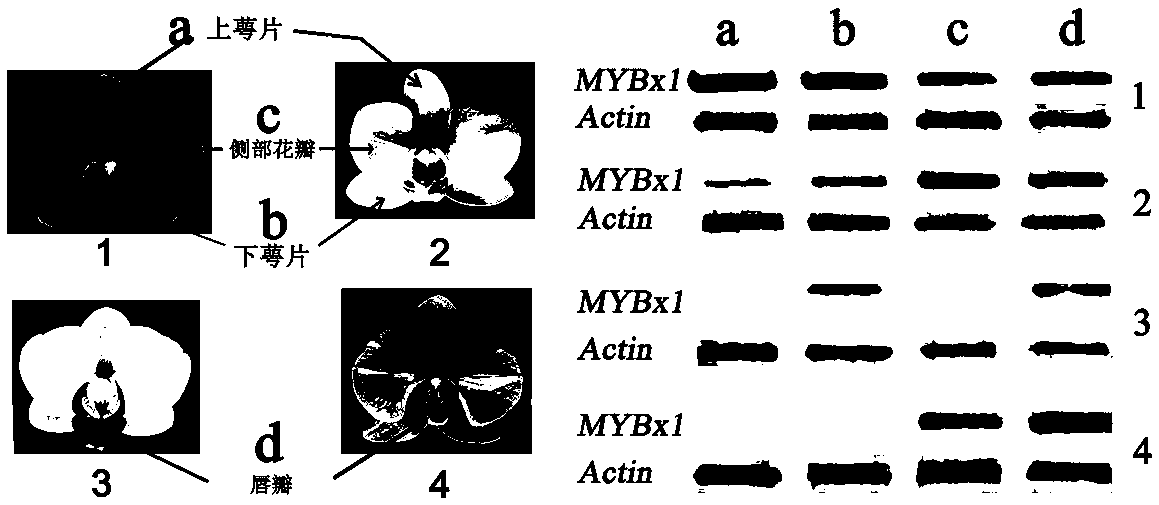Phalaenopsis aphrodite R3-MYBx1 gene and application thereof in flower color adjustment
A Phalaenopsis, r3-mybx1 technology, applied in the fields of application, genetic engineering, plant genetic improvement, etc., can solve the problem that the color of tomato fruit cannot be changed, etc.
- Summary
- Abstract
- Description
- Claims
- Application Information
AI Technical Summary
Problems solved by technology
Method used
Image
Examples
Embodiment 1
[0065] This example mainly introduces the cloning process of the Phalaenopsis R3-MYB gene (including the two gene products of Phalaenopsis MYBx1 and MYBx2), and conducts a preliminary analysis of its expression pattern in Phalaenopsis plants. The specific process is as follows.
[0066] (1) Extract total RNA from Phalaenopsis petals and reverse transcribe it into cDNA. The specific process is described as follows.
[0067] Phalaenopsis RNA was extracted by the Trizol method, and the specific process was as follows:
[0068] Add 1.5mL Trizol to a 2mL centrifuge tube, take 1g~2g of the Phalaenopsis 'Big Pepper' petal sample after quick freezing in liquid nitrogen, grind it and add it to the centrifuge tube, mix quickly, vortex for 2min~3min; 25℃ water bath for 10min ;
[0069] Add 300 μL of chloroform, vortex and shake for 2 min to 3 min, and centrifuge at 12000 rpm for 15 min at 4 °C;
[0070] Slowly pipette 850 μL supernatant into a new 1.5 mL centrifuge tube, add 850 μL iso...
Embodiment 2
[0134] In order to further study and determine the role of Phalaenopsis MYBx1 gene in the regulation of Phalaenopsis flower color, the inventors further constructed related transgenic vectors and transformed petunia by using gateway technology. The relevant experiments are briefly introduced as follows.
[0135] (1) Vector construction
[0136] First, the PCR product of the MYBx1 gene was integrated into the entry clone pDONR207 by using Gateway™ BP Clonase™ II Enzyme mix. The operation steps are as follows:
[0137] Reaction system: PCR product 4 μL (Example 1) + pDONR207 vector 1 μL + BP enzyme 1 μL; overnight at room temperature (or 1 hour at 25°C);
[0138] Add 1 μL of protein kinase to the reaction solution, and react at 37°C for 10 min.
[0139] To transform the reaction product into Escherichia coli JM109, refer to the JM109 Competent Transformation Manual of Takara Company for this process, or refer to the following steps for details:
[0140] Dissolve Escherichia co...
Embodiment 3
[0206] In this example, the gateway technology was used to construct the yeast two-hybrid vector, and then a preliminary analysis was carried out on whether MYBx1 acts on the components of the MBW complex regulating anthocyanin biosynthesis. The related experiments are briefly introduced as follows.
[0207] First, use the fusion vector (entry vector) of MYBx1 gene and pDONR207 to exchange MYBx1 into pGBKT7 / GW and pGADT7 / GW through LR reaction to create the destination vector for yeast two-hybrid (refer to Example 2 for specific operations), other yeast The two-hybrid vector is a vector previously preserved in our laboratory.
[0208] However, it should be noted that the GAL4 gene fused in the pGBKT7 / GW and pGADT7 / GW vectors is located downstream of the target gene. Therefore, the PCR product used to construct the pDONR207 fusion vector is the full-length gene sequence of MYBx1 without a stop codon. PCR The primers used for cloning are as follows:
[0209] F: 5'-GGGGACAAGTTT...
PUM
 Login to View More
Login to View More Abstract
Description
Claims
Application Information
 Login to View More
Login to View More - R&D
- Intellectual Property
- Life Sciences
- Materials
- Tech Scout
- Unparalleled Data Quality
- Higher Quality Content
- 60% Fewer Hallucinations
Browse by: Latest US Patents, China's latest patents, Technical Efficacy Thesaurus, Application Domain, Technology Topic, Popular Technical Reports.
© 2025 PatSnap. All rights reserved.Legal|Privacy policy|Modern Slavery Act Transparency Statement|Sitemap|About US| Contact US: help@patsnap.com



